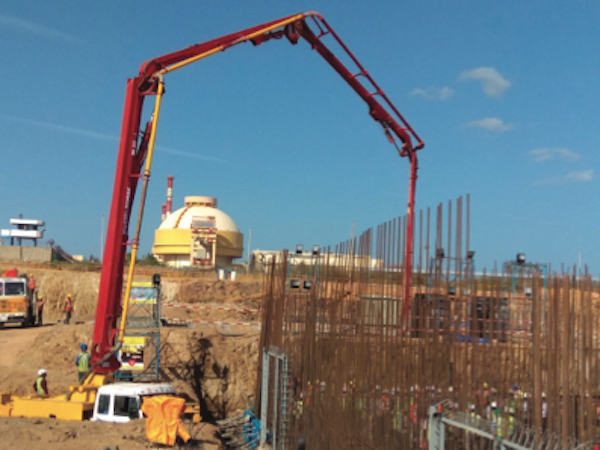 Comptroller and Auditor General of India (CAG) said on 27 December that it had identified some "deficiencies" in the project to construct and commission units 1 and 2 of the Kudankulam nuclear power plant. It followed a performance audit to assess the financial management of Nuclear Power Corporation of India Limited (NPCIL).
Comptroller and Auditor General of India (CAG) said on 27 December that it had identified some "deficiencies" in the project to construct and commission units 1 and 2 of the Kudankulam nuclear power plant. It followed a performance audit to assess the financial management of Nuclear Power Corporation of India Limited (NPCIL).
Currently two VVER-1000 units constructed with Russian assistance are operating at Kudankulam. Kudankulam 1 began commercial operation in December 2014, and Kudankulam 2 reached 100% of its operating capacity in January 2017. On 3 April, NPCIL signed an agreement provisionally accepting Kudankulam 2 from its Russian suppliers and thus marking the unit's entry into commercial operation.
CAG said its audit had identified deficiencies in the project to construct Kudankulam 1&2. These included: the avoidable payment of interest on borrowings; non-transparency in availing loans; lapses in the tariff fixation process; extending undue benefits to the overseas collaborating partner; non-assessment of required manpower with consequent avoidable expenditure; inadequate monitoring; and start of commercial operation before receiving the required licence to operate from the competent authority. "These, as a result, ended up in [a] significant escalation in the cost of the project and substantial delays in commissioning of the units," CAG said in its report.
The initial estimated cost of the two units was INR131.7bn ($2bn) in 2001, which gradually rose to INR224.6bn in 2014, CAG noted. Commercial operations of Kudankulam 1&2 were delayed by 86 and 101 months, respectively. The report said the delays were due to the late completion of different activities of which many were attributable to Atomstroyexport. However, there was no revision of the schedule of repayment of the Russian credit, which resulted in the start of repayments before revenue generation, causing an additional interest burden to NPCIL. That, in turn, led to NPCIL resorting to external borrowings at a higher interest rate.
CAG also noted NPCIL made miscalculations in fixing the tariff for power from the two units, including in the pre-commercialisation period. NPCIL also lost substantial revenue due to an extended refuelling outage at Kudankulam 1 which took 222 days to complete, instead of 60 days because the company wanted to perform the work by itself. NPCIL declared Kudankulam 1 to be in commercial operation on 31 December 2014, which was six months before it received an operating licence from the Atomic Energy Regulatory Board.
CAG made some recommendations to NPCIL to avoid repeating the mistakes, with two further VVER-1000 units – Kudankulam 3&4 – under construction at the site. In June, Russia and India signed a framework agreement enabling construction of Kudankulam 5&6.
Photo: Work started on Kudankulam 3 in June



